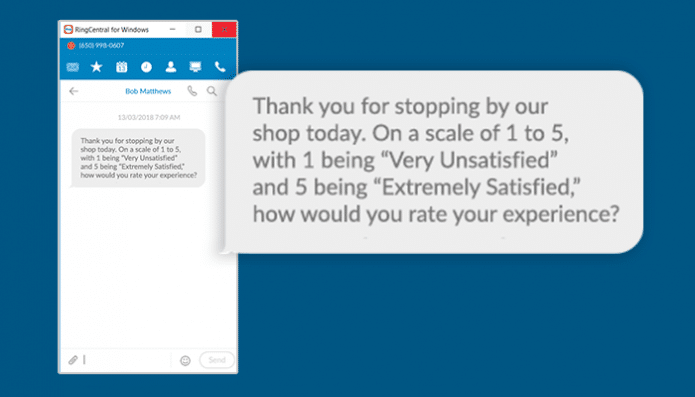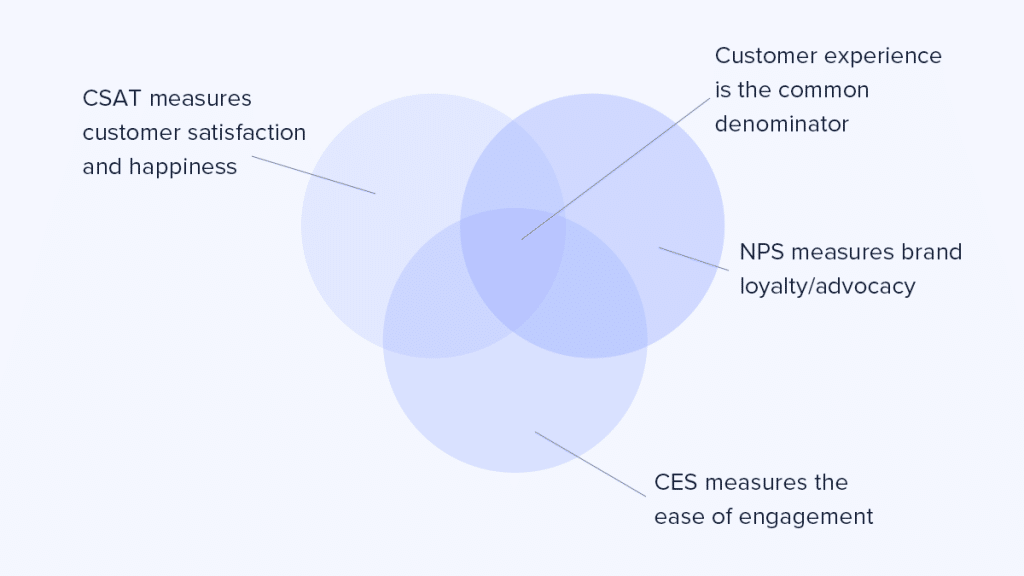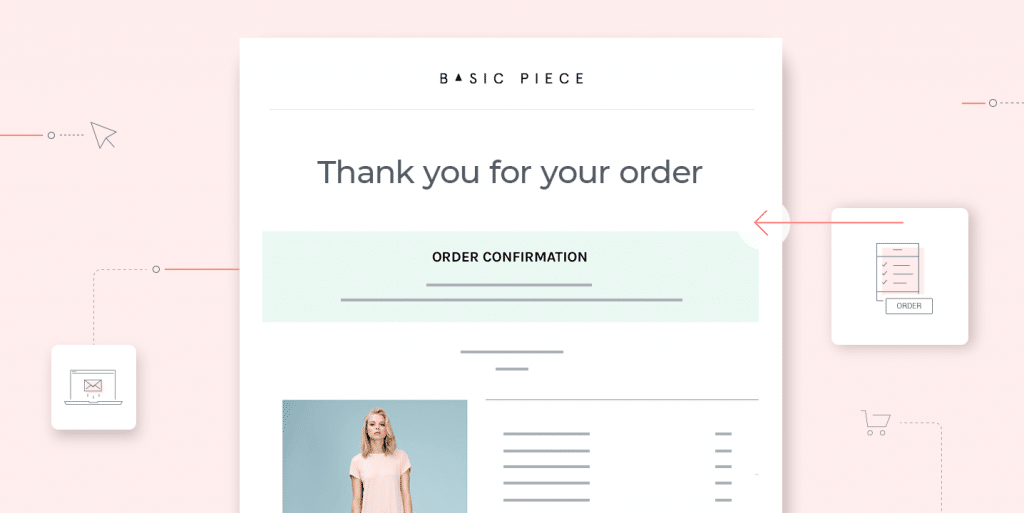For ecommerce businesses, providing great customer service is live or die. In a world full of Amazons (okay, just one, but one is enough), giving customers a fantastic product alone isn’t enough.
Ecommerce businesses that go above and beyond in providing a fantastic experience are creating more than customers. They’re building customer retention.
Even with the mind-boggling growth of Amazon (41% of Americans receive at least one package from Amazon each week),1 there is still plenty of room for ecommerce brands to claim a piece of the digital shopping pie for themselves.
Global consumers spent a not-insignificant $3 trillion online in 2019, and (thanks in large part to a global pandemic keeping most people at home) that number is expected to jump significantly over the next few years (US online shopping revenue was up 68% year over year through the first half of 2020, with projections to hit $6.5 trillion by 2022).2
In other words, if you do it right, there is still plenty of money to be made in ecommerce. But simply having a shiny digital storefront and an impressive array of products isn’t enough alone. What’s an ecommerce business to do?
In this blog post, we’ll look at:
- Why customer service is especially important in ecommerce
- The 5 main ways that ecommerce businesses are prioritizing customer service
⭐️⭐️⭐️⭐️⭐️ Ready to offer 5-star customer service? Get strategies for every stage of the customer journey with this free eBook.
Why customer service is especially important in ecommerce
The world of ecommerce is incredibly competitive—there are an estimated 12 to 24 million online stores across the globe.3 Coupled with this cutthroat landscape, ecommerce customers have simply evolved to expect more from their interactions, and those interactions can shape whether they’re customers for a single purchase or customers for life. A reported 70% of consumers have said that they would remain loyal to retailers specifically because of good customer service—the inverse of that is that 70% of customers cite poor customer service as a reason for not buying.4
This is why smart ecommerce companies are investing heavily in customer experience. In a world where you’re up against the cutthroat pricing of Amazons and Walmarts, the success of your business will hinge on how responsive and helpful you can be for your customers .
How responsive and helpful is that? According to a recent consumer survey we did, we found that 60% of consumers think that three minutes is too long to wait on hold:
Luckily, for ecommerce companies that want to provide the best possible support experience for their customers (that should be all of them), there are a number of customer service apps, tactics, and techniques that’ll help you turn one-and-done purchasers into return customers—and lifelong advocates.
How ecommerce businesses are prioritizing customer service
Amazon staffs thousands of customer service agents dedicated to responding to customer requests. If you’re like most ecommerce businesses, you’re probably running with a fraction of that staff—you might even be responding to customer support requests yourself.
Delivering the level of support your customers are expecting can be difficult even with a dedicated support team—but what if you have to respond to requests while also running the business, balancing the books, managing staff, and fulfilling shipments? What’s a small ecommerce business owner to do?
Basic customer service principles aside, here’s how you can improve your online customer service, regardless of your headcount:
1. Focus on response time
Ecommerce customers are even more time-sensitive than you might think; consumers come to a decision to purchase online after weighing the time spent commuting to a brick-and-mortar location with the immediate dopamine hit that comes from purchasing from a website—but the time-sensitivity doesn’t stop there.
They’re also motivated by the ability to quickly compare different products, get their purchase delivered to them efficiently, and receive fast responses to their inquiries. (Hello, agile customer service.) When you consider how quickly customers can get answers from staff in traditional retail stores, that half-hour expectation for ecommerce doesn’t seem so unreasonable.
To help meet these customer expectations, ecommerce businesses are focusing on data like customer service KPIs and call center metrics, and using tools to help improve them. First up, it helps to know what your baseline average handle time is—and whether customers are contacting you by phone, email, text message, social media, or live chat.
Using an omnichannel customer service solution with reporting and customer experience analytics will allow you to have more visibility into the time your customers are spending waiting for a response, no matter which communication channel they’re using to reach out.
If your business gets a lot of phone calls, make sure you’re regularly checking your average response time numbers and first call resolution standard.
If you’re relying on voice channels for support requests, there are a few important nuances that you should be aware of
- The longer customers have to wait on the phone to get in touch with a customer service rep, the greater the chances they’ll grow frustrated with your brand (76% of Americans tell friends or family about a bad customer experience5). The businesses that frequently rank the lowest for customer experience (airlines and cell phone providers) are also notorious for lengthy customer service hold times.
- If you can’t avoid these hold times, you can still probably minimize them! Using tools like interactive voice response (IVR) menus is one common and effective way to stave off customer frustration by giving them the ability to try to find answers themselves without waiting for you and sitting on hold for an extended period of time.
- Let customers request a call back once agents are available according to their place in line to curb tendency for callers to abandon customer service.
Once you know your baseline response time, there are tools and customer service software that you can use to give it an immediate lift. Live chat is gaining popularity with ecommerce businesses because it helps them do just that. In fact, live chat is the clear channel leader when it comes to response time, with an average response time of less than 48 seconds.6 Live chat can help boost response time in a number of ways: by allowing support staff to run multiple chats at the same time, by providing obvious visual stimulus for support staff to cue in to immediately, and by giving businesses the ability to manage incoming support requests with AI or automation (which we’ll discuss later).
2. Focus on solving the problem
For many years, the mandate for customer service across all industries was to repeatedly go “above and beyond” for customers—doing whatever it took to make a customer happy in order to retain their loyalty.
This usually translated into costly initiatives for businesses like refunds, credits, or free services like expedited shipping—even when they weren’t being requested. For small ecommerce businesses with thinner margins and smaller order volume, this can be beyond the realm of possibility.
Luckily, a Harvard Business Review study found that even though the majority (89 of 100) of customer service leaders reported a strategy of exceeding expectations, 84% of their customers reported that their expectations were not exceeded in their most recent interaction.7

When customers contact a support department, they usually have one goal—to get their problem solved. Whether the CEO or the support team are managing customer requests, the focus should be on doing just that. From the same Harvard Business Review study:
“When it comes to service, companies create loyal customers primarily by helping them solve their problems quickly and easily.”
“Making it easy” is a broad statement, but the study found a number of areas that customer service functions could focus on:
- Limiting the number of customers having to contact the company repeatedly (or be transferred) to get their issue resolved—empower support representatives to resolve customer inquiries on first contact
- Limiting the number of customers needing to repeat information—keep detailed call notes in a CRM documenting previous customer interactions
- Limiting the number of customers having to switch from one service channel to another to get support (such as a customer being directed to call into a support center after failing to resolve their issue through email)
In order to measure the success of your support interactions, there are a number of different metrics available:
Customer Satisfaction Score:
The Customer Satisfaction Score (CSAT) is one of the most used metrics by customer service departments. It is measured by asking a satisfaction survey question like:
“How would you rate your overall satisfaction with the goods/service you received?”
CSAT usually ranges between 1 to 3, 1 to 5, or 1 to 10.
Net Promoter Score:
Net Promoter Score (NPS) is a metric to measure how likely customers are to recommend a product or service to their colleagues or friends.
It’s calculated by asking this question:
“How likely are you to recommend this company to a friend?”
Customers rank on a scale of 0–10, with those who score 9 or 10 being classified as Promoters, 7 or 8 as Passives, and anyone scoring 6 or below as Detractors.
Customer Effort Score
Customer Effort Score (CES) is a metric that measures how much work customers needed to invest to get a response from your business.
The customer effort score measures the user experience with services or products via a simple survey tool that asks customers to rate their experience.

There are a number of different tools out there that allow ecommerce businesses to accurately capture customer feedback such as Delighted (for NPS), Usabilia (for Customer Satisfaction or Customer Effort), or even free survey software like Typeform or Surveymonkey. Make sure you have some way to measure whether your customers are actually having their needs met, and integrate those survey responses you collect into your customer service communications plan—both sharing with your team internally, as well as feeding response data into customer records for future reference.
Learn more about customer surveys.
3. Focus on proactivity
The best customer support interactions are always the ones that answer questions the customer didn’t even know they had—and in ecommerce customer service especially, a little proactivity can go a long way towards building loyalists for life.
Proactively serving your customers can take a number of different forms:
- Monitoring support requests for trends and emerging issues can allow you to stay on top of problems as they develop and reach out to customers instead of them having to contact you.
- Often, customers won’t even reach out to you at all, regardless of how unhappy they are. Be proactive and regularly see if they’re happy with the customer experience, and use those opportunities to tell them about additional products or services and ongoing promotions. This puts you in a better position to control the conversation—giving you the ability to manage the number of inbound calls and messages at any given time, ultimately cutting down on the total volume.
- Use an automatic call distributor that’ll transfer the call instantly to an available agent or the agent with the skills to answer that question best. This helps your team be more productive while optimizing the customer experience and making sure there’s no dead air when the customer picks up.
- Be upfront and announce problems before customers notice. As in every ecommerce business, disruptions are inevitable. There may be shipping delays, stock problems, and customs delays—instead of letting your customers discover those delays themselves and get disappointed, why not proactively reach out to them and be transparent? This way, you have an opportunity to build trust and, ultimately, loyalty for your business too.
By using the communication tools at your disposal, whether it’s chat, an automated dialer, proactive staff outreach, or business texting, you’ll empower your team to reduce support volume, boost customer loyalty, and free up business resources to focus on solving the problem.
4. Focus on automation
Thanks to technology, you don’t have to be a retail titan with a huge support team to stay on top of all the customer questions you get. Specifically, we’re talking about automated customer service.
If you do it right, you can have a team of two or even one managing customer service across all your social media channels, phone lines, email inboxes, and more—all at a relatively low monthly fee.
Sound too good to be true? Welcome to the world of automation.
By using task automation across your different support channels, you can give your customers the illusion that they’re interacting with a real human being at all times, while capturing data that can improve your customer experience and provide more customized customer interactions in the future. The really cool thing here is that regardless of how you’re communicating with your customer, there’s probably an opportunity to automate.
Through chat:
- Productivity and agent satisfaction decline when your team is spending too much time resolving the same issue again and again (how many times can one person answer “where is my shipment” before they lose their mind?) Identify the most frequent support flows for your business, then look into using self-service AI chatbots and microbot solutions that allow your customers to receive a tailored level of care without requiring a human’s time and help.
- Acknowledge that chatbots won’t always have the answers your customers need, and make sure there’s a workflow automation in place that’ll allow chatbots to seamlessly “hand off” chats to live agents when they hit their limits, without requiring customers to repeat themselves.
Through email:
- Emails can be automated based on a number of triggers in the customer journey. Some examples:
- An email containing all purchasing information when an order is placed
- An email containing tracking information when an order is shipped
- An email capturing customer sentiment after a support interaction
- Email automation isn’t only for outbound messages either—inbound emails can be handled through automation as well. For example, automation can route your support requests to the right person or department, or auto-respond based on identified keywords or subject lines, reducing the number of manual responses that need to be crafted:

Through text:
- Text messaging support is on the rise (thanks, Millennials!). In a survey from eWeek, 52% of respondents said that they would prefer to text with a customer support rep if given the option, and an additional 52% said they would prefer to text over their current preferred method of communication.8Here’s a cool example of how a T-shirt printing company interacts with its customers and checks up on orders—by texting them!
- Text messaging support offers the same opportunity for automation as your email and live chat channels combined, with little manual intervention—and better open/response rates. In fact, the average open rate for text messages is 98%—compared to 22% for email.9 If your customers are ignoring your support responses, it might be time to reach them via text.
Through phone:
- Automated call routing can keep communications flowing to and from customers, employees, and executives, not to mention globally dispersed workers or distribution centers.
- Manual call forwarding is a lot more challenging than it might first seem, and the sheer scale of incoming customer calls can be difficult to manage. Look for a phone service with advanced call routing options and skills-based routing that’ll allow managers to create rules that automatically allocate calls to the right customer rep based on their level of skill and experience—giving your customers the perfect support interaction, every time.
To win at ecommerce customer service, you don’t need to be Amazon
Trying to build a winning ecommerce business in the face of giants like Amazon and Walmart is daunting enough, without having to agonize over every customer support interaction coming your way—and, as your business scales, those interactions are only going to increase.
By focusing on the opportunities in this article and building a foundation using a tool that supports omnichannel customer support, you’ll be able to respond to your customers faster, solve their problems sooner, and have them returning to your business again and again—ensuring that while you might not be a Bezos, you’ll definitely be a boss.
1 walkersands.com/us/en/blog/wp-content/uploads/2018/07/Walker-Sands_2018-Future-of-Retail-Report.pdf
2 statista.com/statistics/379046/worldwide-retail-e-commerce-sales/
3 wpforms.com/ecommerce-statistics/
4 loyaltylion.com/blog/how-important-is-ecommerce-customer-service
5 zendesk.com/blog/customer-service-and-lifetime-customer-value/
6 acquire.io/blog/eight-metrics-measure-live-chat-agent-performance/
7 hbr.org/2010/07/stop-trying-to-delight-your-customers
8 eweek.com/networking/consumers-like-using-text-messages-to-solve-customer-service-issues
9 gigaom.com/2015/01/18/why-sms-is-the-new-channel-for-customer-support/
Originally published Jun 01, 2020, updated Jul 01, 2022





